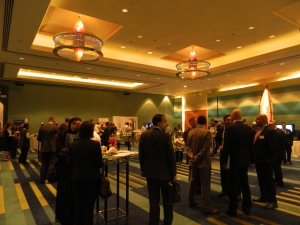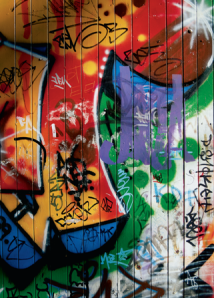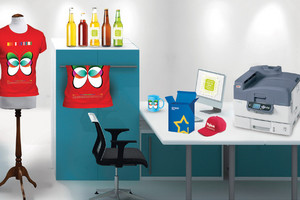
OKI printer producing 1.2m banner and CD covers
A recent study by leading business research body the Centre for Economics and Business Research (cebr) has suggested that businesses in the EMEA region could save a staggering $25,000 million by changing the way they manage their printing, and in particular by bringing more of their print requirements in-house.
While it may not necessarily be well quantified in any management system, print is a large element in any company’s overheads. The US Environmental Energies National Laboratory estimates that each worker is responsible for 10,000 printed pages a year, equivalent to 50kg of paper.
It makes sense to reduce the amount of print that is required, and to minimise the cost of that printing. The cebr study suggests that, by implementing a modern approach to document handling and bringing as much in-house as is practical, businesses could expect to save as much as 30% of their costs overall.
It is important to understand that these savings are attainable without compromising in any way the quality of the print work. Changing the print policy depends on taking advantage of recent developments in both document handling and printer technology: there is now no reason why you should not achieve consistently high quality results in-house.
In summary, the principle is to print just what you need, when you want it, where you want it. It boosts cashflow, saves storage space and distribution costs, ensures accuracy and timeliness, boosts efficiency and greatly reduces waste. Here are just a few ways in which print costs can be saved.
Do not outsource the print of letterheads or invoice blanks, or any other standard stationery. There is absolutely no need to have two print processes when one would do, and printers from innovative companies like OKI Printing Solutions are perfectly capable of accurately printing logos and layouts within tight colour tolerances.
Keep brochures and data sheets online, which is where most customers expect to find them now. They can download and (if they need to) print them at their premises; you can print just those copies you need, for display or for special purposes such as an exhibition. It means you can keep the information up to date without having to pulp old brochures, and you can be sure there is no chance of old information remaining in circulation.
Paper has two sides so use them both. Duplex printers for double-sided output are now widely available, fast, and reliable in paper handling. Double-sided printing means half the paper cost.
Use the right printer for the job. High speed, high volume collating devices are available for when you need multiple copies of a large document, so staff should not need to tie up a desktop printer all day. Save colour printers for colour printing and use a mono printer when you can.
Guard your commercial confidentiality. Your competitors may use the same print shop chain as you do, printing in-house is much more secure and allows you to keep control of your confidential information.
In-house printing is about more than plain paper. Today’s printers are comfortable with a very wide range of stock. If you want a glossy brochure – print it onto gloss board. Want to give a presentation a luxurious feel – print it on to high white, heavier paper. Need self-adhesive, sequentially numbered barcode labels for products and packaging, or customised CDs or DVDs – specialist printers can be added to the network for special applications like this, or by using software supplied in the box from Oki a “standard” printer can be used to print variable data.
Print where you need the copy rather than where the data is; If you want copies of a brochure in Hong Kong, better to print it there than shipping it from the home office (even if it means using an outsourced print shop).
These seem simple and obvious points but, combined with the latest in print technology from an advanced and innovative supplier like OKI Printing Solutions, they can deliver real results in terms of reducing costs and saving management time. Putting the right print solutions in place boosts staff efficiency and boosts their enthusiasm.
The brand values of a business are still judged, in part, by the quality of its printed material. The good news is that by applying good print management a business can make worthwhile savings in overheads – particularly significant in this time of financial turmoil – without in any way compromising the quality of its documentation or its impact on potential customers.
Filed under: Tips | Tagged: In-house printing, OKI, Oki Printing Solutions, printing cost | 2 Comments »













